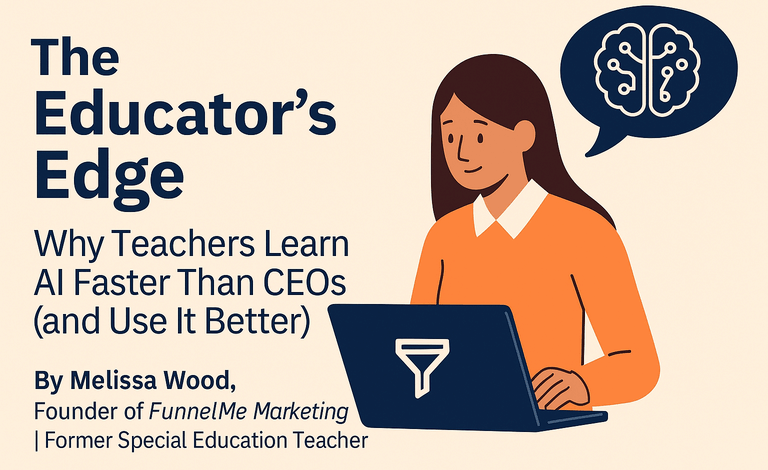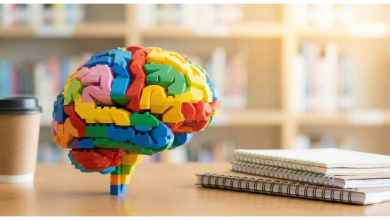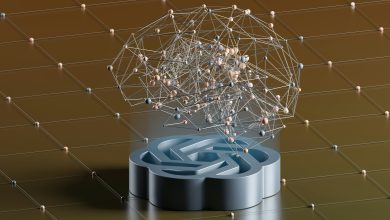
Introduction: A Teacher Meets AI
Hi, I’m Melissa Wood. Before I became a digital marketer, I was a special education teacher — and I’m still a special education teacher. It often feels like I’m living two lives. I write IEPs, build visual supports, and differentiate instruction for kids who need things explained five different ways.
I never thought that background would give me an edge in the world of AI. But as I learned to use tools like ChatGPT (https://openai.com/chatgpt), I realized something surprising: teachers don’t just understand how to use AI — we understand how to teach it.
While CEOs are busy overanalyzing AI and formulating new “prompts” they believe will generate better results, teachers are doing what they’ve always done: testing ideas, pivoting quickly, and adapting tools in real time.
Scaffolding Is Prompting — We’ve Been Doing It for Years
Teachers are trained in how people learn. We scaffold information, chunk it into digestible parts, and model processes out loud — all of which translate seamlessly into prompting AI. (Here’s a helpful resource on scaffolding from Edutopia: https://www.edutopia.org/article/powerful-scaffolding-strategies-support-learning.)
Want a better output from ChatGPT? You need to: Break down your instructions step-by-step. Offer examples of tone or structure. Give feedback and revise collaboratively.
Sound familiar? That’s what teachers do all day. Prompting AI doesn’t have to be rocket science or feel like coding. It’s more like giving directions to a curious student. It’s about clarity — something teachers reverse-engineer every day.
Teachers Adapt Faster Than Executives
In education, there’s no time for perfect planning. You try something, observe what happens, and pivot. That lesson plan you spent hours on and were so excited about? Guess what — your kids couldn’t care less that day. Adapt on the spot.
That makes teachers highly compatible with fast-moving tools like AI. Many executives hesitate to use AI until they’ve read the data, the case studies, or a 40-page PDF that proves its value. Teachers? We test it out during lunch and find three ways it could make tomorrow’s lesson (or lead magnet) easier, better, more efficient.
When I began using ChatGPT for marketing tasks, I approached it like planning a unit: What’s the end goal? (A funnel, a blog, a screencast script?) What scaffolds can I build? (Prompts, outlines, structure?) How can I simplify it for different learners? (Clients, audiences, students?)
This mindset let me move fast and produce real results before I ever felt like an “expert.” AI was teaching me how it learns, while I was teaching it how to produce what I needed most efficiently. In a way, we’ve been sitting here teaching each other — and this teacher-AI team is kind of magical.
The results I’m able to gather, learn from, and produce for both students and clients in half the time? There’s not even a word for it. Surprising doesn’t cut it.
Emotional Intelligence Makes Better AI Collaborators
Perhaps the biggest advantage teachers bring to AI is empathy. Educators are always thinking about accessibility, clarity, and user needs.
We don’t just ask AI to write a headline — we ask it to write a version that feels inclusive, human, and true to the person behind the brand. That emotional intelligence layer is what many corporate AI strategies miss.
I use AI not to replace my creativity, but to accelerate it. Whether I’m building a landing page for an RV repair shop or helping a therapist write their Google Business profile, I use AI as a collaborative tool — a digital teaching assistant.
It honestly feels like a collaborative partner — more like a co-teacher or teaching assistant than a digital errand-runner. When you give AI your tone, your voice, your energy — it learns it, mirrors it, and starts collaborating with you instead of just spitting something out.
The output adds value to what I already created, whether that’s a blog, a funnel, or a screencast script. It doesn’t sound like generic AI filler. I’m not getting the same robotic phrases I see everywhere else: “Thanks for the thoughtful reply,” or posts that end with “Warmly.” Humans don’t really talk like that. AI does — unless you teach it better.
Teachers do this naturally. We speak with empathy, emotional intelligence, and real tone. That shows up in how we talk to AI, and in what it gives back to us. I don’t have to fix awkward phrasing or edit out weird corporate language. My AI already sounds like me.
Try it and see. I’d argue teachers have an automatic advantage with AI, because collaboration is second nature to us. (Research backs this up too — see MIT’s study on how teachers adapt and thrive when using AI in classrooms: https://arxiv.org/abs/2312.04839)
The Future of AI Needs People Who Think Like Teachers
The next wave of AI superusers won’t just be engineers or executives. They’ll be the people who know how to manage chaos, communicate clearly, and adjust based on feedback: teachers.
We are trained to work with systems, lead people, and make complex things simple. That’s exactly what AI needs right now. So if you’re hiring, consulting, or building AI products — invite more educators to the table. Not because they understand code, but because they understand context.
The future of AI needs more people who think like teachers.
Melissa Wood is the founder of FunnelMe Marketing, an Anchorage-based SEO and digital marketing business helping small businesses grow with AI-powered strategies.




